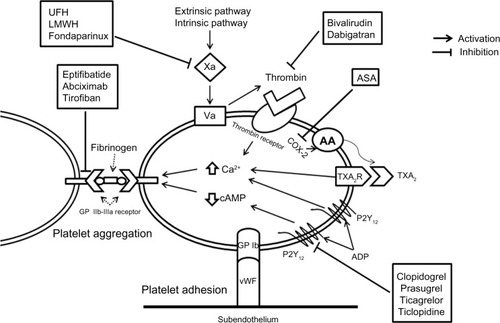Figures & data
Figure 1 Platelet activation pathway and site of action of antiplatelet agents.
Abbreviations: AA, arachidonic acid; COX-2, cyclo-oxygenase-2; cAMP, cyclic adenosine monophosphate; ADP, adenosine diphosphate; ASA, aspirin; UFH, unfractionated heparin; LMWH, low molecular weight heparin; TXA2, thromboxane A2; GP, glycoprotein; vWF, von Willebrand factor; TXA2R, thromboxane A2 receptor.

Table 1 Basic pharmacologic characteristics of glycoprotein IIb/IIIa inhibitors
Table 2 Studies with eptifibatide in patients undergoing PCI in STEMI
Table 3 Studies with eptifibatide in patients with ACS and stable CAD undergoing PCI
Table 4 American College of Cardiology/American Heart Association guidelines (modified) for use of eptifibatide in patients undergoing PCI
